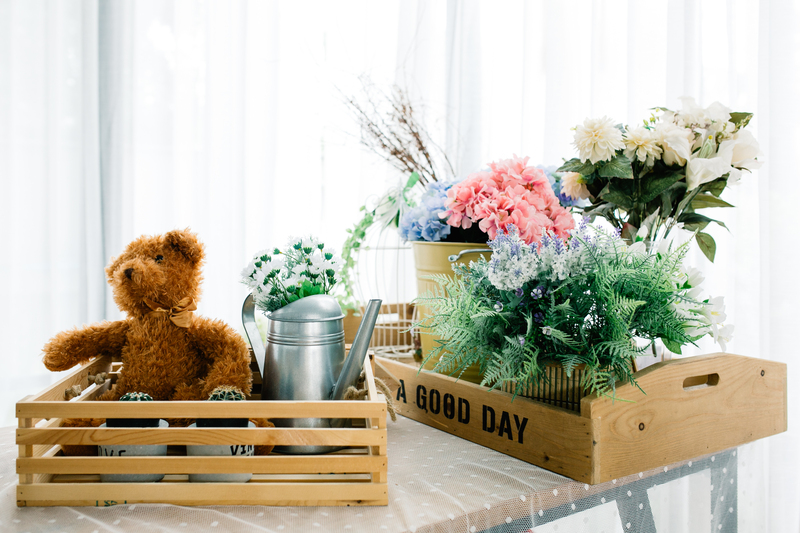Eco-Friendly Home Design: A Guide to Greener Living
In our rapidly changing world, the importance of sustainability and environmental consciousness has never been greater. As individuals and communities strive towards a more balanced and eco-friendly existence, eco-friendly home design emerges as a pivotal element in achieving greener living. This guide will delve into the principles, strategies, and benefits of adopting a sustainable lifestyle through innovative home design.
Understanding Eco-Friendly Home Design
Before exploring specific strategies, it's essential to understand what eco-friendly home design entails. At its core, eco-friendly design is about minimizing the environmental impact of our homes while maximizing their efficiency and comfort. This can involve utilizing sustainable materials, harnessing renewable energy sources, and incorporating energy-efficient systems.
Principles of Sustainable Living
Adopting eco-friendly home practices involves several key principles:
- Energy Efficiency: Reducing energy consumption through efficient appliances and home systems.
- Sustainable Materials: Using materials that are renewable, recyclable, or sustainably sourced.
- Water Conservation: Implementing systems to reduce water waste.
- Indoor Air Quality: Ensuring a healthy indoor environment by using non-toxic materials and good ventilation.

Benefits of Eco-Friendly Home Design
The shift towards an eco-friendly home is rewarding for both the environment and the homeowner. Here are some benefits:
- Environmental Impact: By reducing resource use and emissions, eco-friendly homes contribute less pollution and waste.
- Cost Savings: Energy-efficient systems and reduced utility bills lead to significant long-term savings.
- Healthier Living Spaces: Improved air quality and natural lighting promote better health and well-being.
- Increased Property Value: Green features are increasingly attractive to homebuyers, often increasing home value.
Strategies for Creating an Eco-Friendly Home
Energy-Efficient Solutions
Energy use is a significant contributor to a home's carbon footprint. Consider these strategies:
- Solar Panels: Install solar panels to harness renewable energy and reduce dependence on fossil fuels.
- LED Lighting: Use LED bulbs which are more energy-efficient and longer-lasting than traditional bulbs.
- Smart Thermostats: Implement smart thermostats to optimize heating and cooling, significantly reducing energy waste.
Sustainable Materials in Home Design
Choosing the right materials plays a critical role in eco-friendly design:
- Recycled Materials: Opt for furniture or building materials made from recycled products.
- Bamboo Flooring: Bamboo grows quickly and requires less pesticide compared to traditional wood, making it a sustainable choice.
- Low-VOC Paints: Use paints with low volatile organic compounds to enhance indoor air quality.
Water Conservation Techniques
Water is a precious resource. Here's how to minimize waste:
- Low-Flow Fixtures: Install low-flow faucets and showerheads to reduce water usage.
- Rainwater Harvesting: Collect rainwater for irrigation and non-potable household use.
- Native Landscaping: Use native plants in gardens to reduce the need for watering and chemical fertilizers.
Improving Indoor Air Quality
A healthy home environment is crucial for well-being. Consider these measures:
- Ventilation Systems: Install systems to ensure a constant flow of fresh air.
- Houseplants: Introduce houseplants that naturally purify the air.
- Non-Toxic Construction: Choose non-toxic building materials to reduce exposure to harmful chemicals.

Challenges and Solutions in Adopting Eco-Friendly Designs
While the transition to eco-friendly home design offers numerous benefits, it is not without challenges. Some common obstacles include:
- High Initial Costs: Although initial costs can be high, consider the long-term savings in energy and maintenance.
- Availability of Materials: Not all eco-friendly materials are readily available; planning and research are crucial.
- Finding Qualified Professionals: Seek professionals with experience in sustainable design to ensure quality and efficacy.
Mitigating these challenges requires careful planning, research, and in some cases, incremental changes. Start small by upgrading lighting or adding plants, then gradually incorporate larger modifications as resources allow.
The Future of Eco-Friendly Homes
The emphasis on sustainability and eco-friendly living will continue to grow as awareness and technology advance. Innovations such as smart home technology, new sustainable materials, and community-driven initiatives promise to make green living more accessible and efficient. In embracing these advancements, we not only reduce our environmental impact but also pave the way for a healthier, more sustainable future.
By making informed decisions and integrating the principles of eco-friendly design into our homes, we contribute positively to the planet and future generations. Let's embark on this journey to create homes that reflect our commitment to a greener world.
Investing in an eco-friendly home is an investment in the future, offering substantial benefits to our planet, our wallets, and our health.
For further information or to embark on your eco-friendly home design project, contact local sustainable building experts, or explore online resources for inspiration and guidance. Together, let's champion a brighter, more sustainable future for ourselves and generations to come.